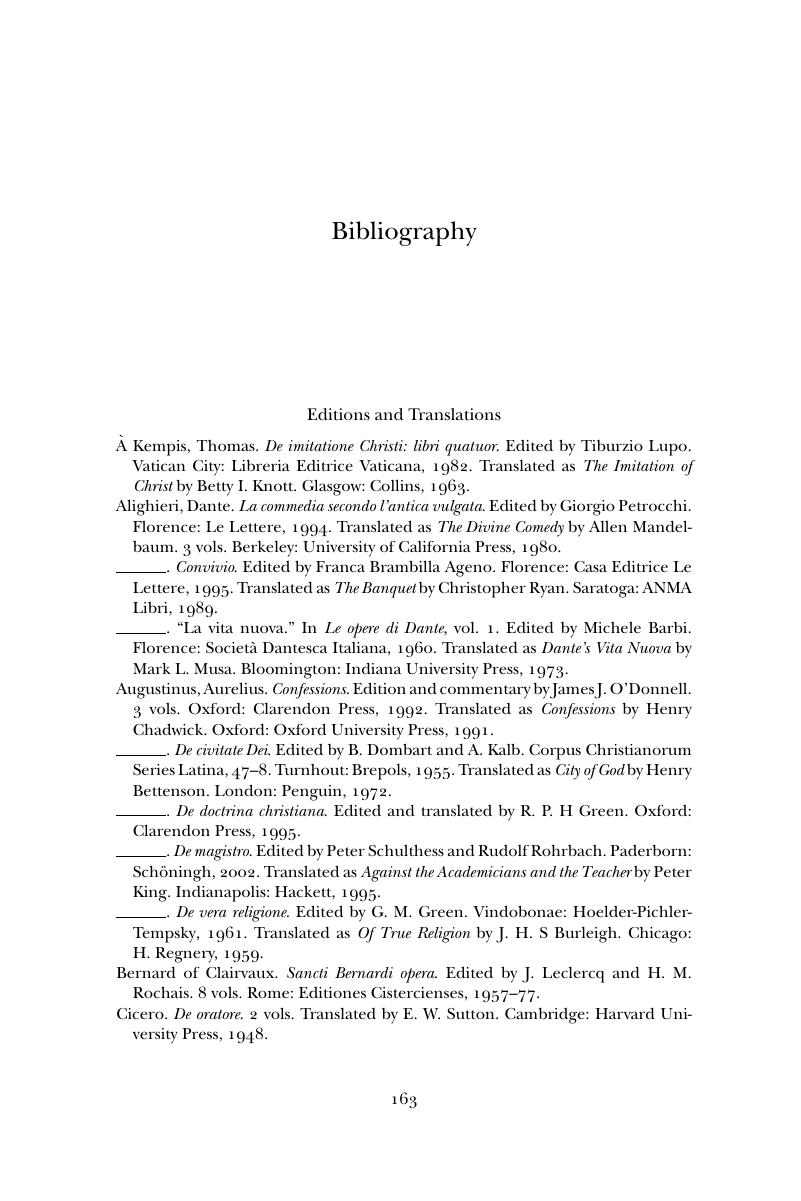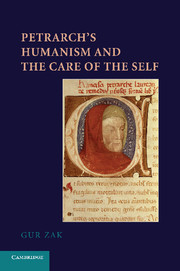Book contents
- Frontmatter
- Contents
- Acknowledgments
- Introduction
- 1 The Indeterminate Self: Writing, Desire, and Temporality in Petrarch's Rerum vulgarium fragmenta
- 2 The Crisis of the Narrative Self
- 3 Petrarch's Humanism and the Ethics of Care of the Self
- 4 Ovid, Augustine, and the Limits of the Ethics of Care of the Self
- Conclusion
- Bibliography
- Index
- References
Bibliography
Published online by Cambridge University Press: 24 April 2010
- Frontmatter
- Contents
- Acknowledgments
- Introduction
- 1 The Indeterminate Self: Writing, Desire, and Temporality in Petrarch's Rerum vulgarium fragmenta
- 2 The Crisis of the Narrative Self
- 3 Petrarch's Humanism and the Ethics of Care of the Self
- 4 Ovid, Augustine, and the Limits of the Ethics of Care of the Self
- Conclusion
- Bibliography
- Index
- References
Summary

- Type
- Chapter
- Information
- Petrarch's Humanism and the Care of the Self , pp. 163 - 172Publisher: Cambridge University PressPrint publication year: 2010



